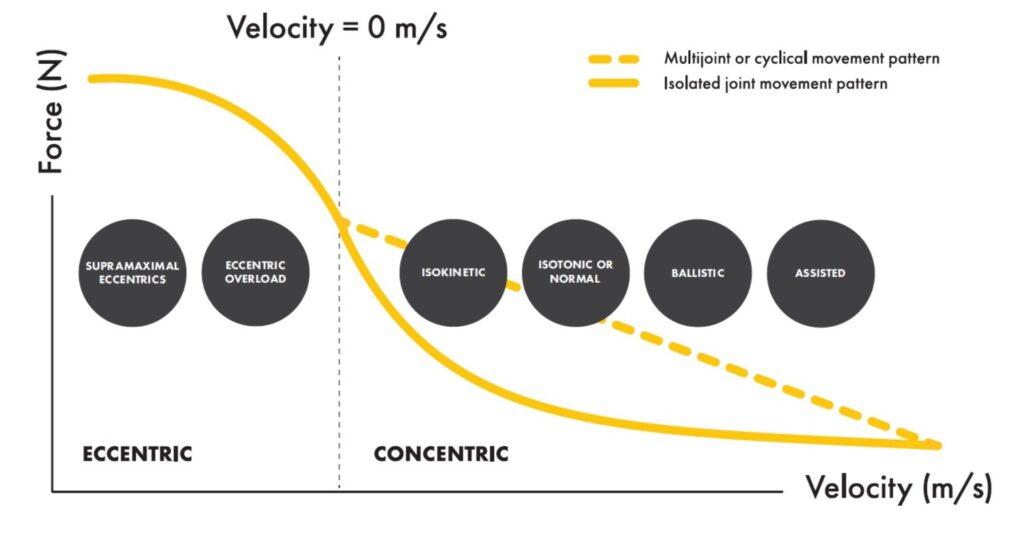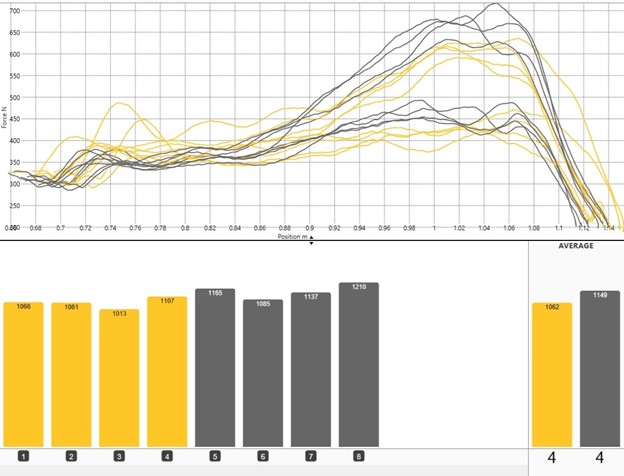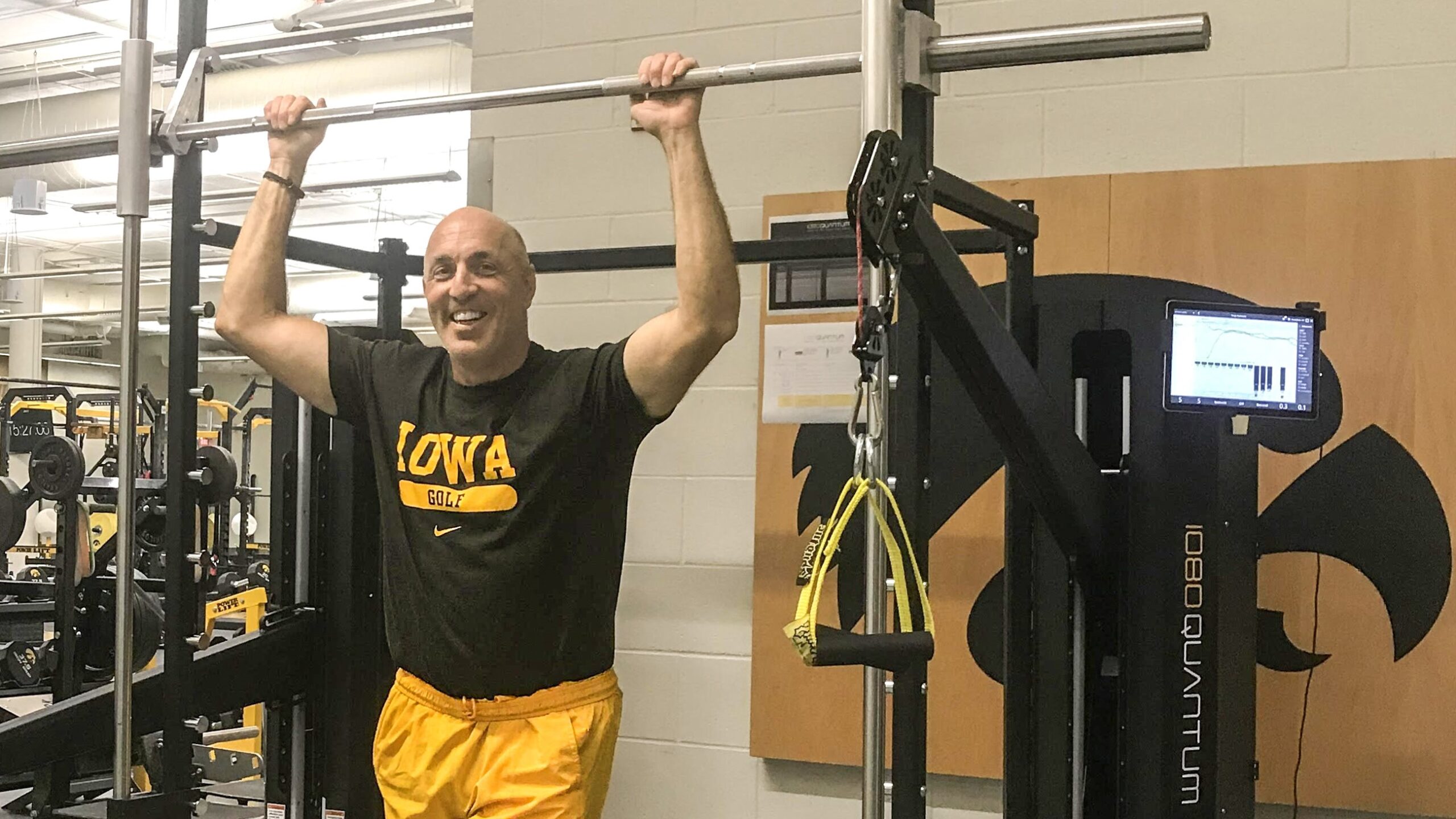March Madness and the college basketball season are behind us now. Did you know that the Iowa Hawkeyes are one of only 10 teams in the country to make the last four NCAA Tournaments?
What factors play into this consistency to perform at a high level?
We can certainly look at the on-court statistics like scoring (18th in the country this year) or assist-to-turnover ratio (3rd). But what about building strong and explosive athletes?
In this 1080 Motion blog, we take a sneak peek into how Director of Athletic Performance Bill Maxwell utilizes the 1080 Quantum Syncro to surf the force-velocity curve and develop strength and power in the Hawkeye round ballers.
The 1080 Quantum Syncro
For those not familiar with the 1080 Quantum Syncro, let’s first get a quick overview, and consider why Cal Dietz says “It’s absolutely the most effective tool that exists….” (quote from a Strength in Numbers 1080 webinar).
The 1080 Quantum Syncro is an extremely versatile piece of equipment that offers the ability to select load and speed during both the concentric and eccentric phases of any movement. This translates into a wide range of resistance options to individualize training to meet an athlete’s speed, power, or strength needs along the Force Velocity curve (see below). In addition, it provides real-time measurements of force, velocity, and power over distance or time.

Figure 1. Force Velocity curve displayed with multiple eccentric and concentric training modes to individualize the training experience.
A Force Plate with Resistance
Like most basketball teams, vertical jump testing is also a staple in the Hawkeye program with Coach Maxwell testing the counter movement jump on dual force plates once per week. In addition, he also utilizes the 1080 Quantum to chart the average force and power output of the best set for selected exercises within each training session. In this manner, training is testing. And if needed, jump tests can be performed with the unit as well.

Figure 2: Each rep performed with the 1080 Quantum Syncro is displayed in real-time, enhancing instantaneous feedback of performance to the user. Users can choose to view Speed, Force, or Power displayed over Time or Distance.
Off- season Gains
During the off-season, the Hawkeye’s perform 2 days of high-intensity strength training and 2 days of low-intensity strength training, each lasting 1 hour.
The Quantum Syncro is used extensively during this training phase for isokinetic strength work for the following exercises: bilateral and unilateral squat and bench press. The strategy for using the Quantum was to focus on the IsoKinetic mode to get good at it before expanding into the other resistance modes. In addition, neuromuscular and tendon strength gains from isokinetic resistance training are greatly enhanced and can carry over into dynamic exercise performance.
Maxwell also emphasized that “the 1080 created a great environment and motivational climate where players were more intentional with every rep compared to using the barbell given the real-time feedback”.
More specifically, Coach Maxwell shared some of the recipe that goes into using the 1080 Quantum. In the summer (mid-offseason), key compound exercises are programmed at higher intensities (3-4 sets x 2-4 reps) at 0.2 – 0.3 m/s along with some supramaximal eccentric boost work (2-3 sets x 3-4 reps) assuming the athlete is prepared for it. This involves minimal concentric work at typically a very low load to move the limb into a shortened position, and after hitting the boost button, the user resists as much as possible against the powering eccentric boost pull at the programmed speed of 0.1 m/s, offering up to 300 kg (660 lbs). During this training phase, additional speed-power work is done with acceleration sprints and plyometrics.
The transition to fall training (late off-season/pre-season) is spent with strength work on 1080 Quantum at 0.4 – 0.6 m/s (3-6 sets x 2-3 reps), explosive quarter squats and flying 10’s to enhance maximal sprinting speed.
In-Season Programming: The B1G Grind
As the fall foliage turns into snow-filled winter evenings in Iowa City, the quest for March Madness begins. The 30-plus game schedule begins in November with the heart of the Big 10 conference tussles in January and February. The twice weekly Big 10 conference matchups are characterized as highly physical; thus the importance of the off-season physical preparation.
During the in-season phase, Maxwell programs two high-intensity days lasting 30 minutes per session prior to practice. In these short but intense sessions, athletes will perform a power movement like clean pulls and then a lower body strength movement at 0.4 – 0.6 m/s (2 sets x 2-3 reps) on the Quantum, which is superset with an upper body strength exercise.
Again, given the demands of the schedule, travel and/or fatigue, low-intensity days consisting of general strength circuits and mobility work are sometimes utilized.
Proven Results
The incorporation of the 1080 Quantum into the Hawkeye basketball strength and conditioning program is supported by research. In a study published in the premier journal of the American College of Sports Medicine, it was found that training with the Quantum was just as effective, if not more effective, and more time-efficient as free weight or Olympic lifting for improving vertical jump and sprinting performance.
Bill Maxwell is the Director of Athletic Performance at the University of Iowa. He is an invited speaker at the 1080 Summit 2023 in Park City, Utah.






























































